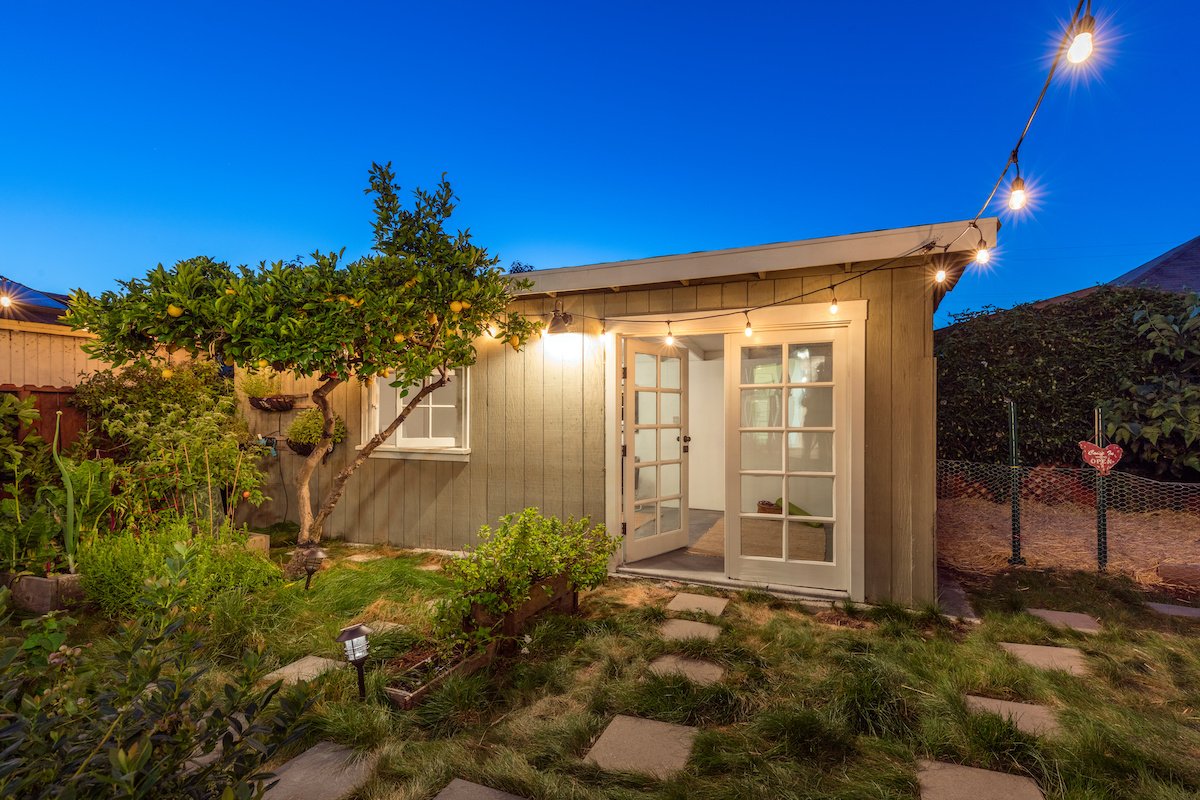So you're thinking about building an ADU?
Accessory Dwelling Units are great. They provide homeowners with an affordable and effective way to extend their primary residence with extra square footage right on your property. Californians can create and ADU as a detached building, or in an addition, second-story, basement, or garage.
What are ADUs, JADUs, MTHs? An ADU is an attached or detached residential dwelling unit that provides complete independent living facilities for one or more persons and is located on a lot with a proposed or existing primary residence; a JADU is a Junior ADU and is less than 500 square feet in size and contained entirely within a single-family structure; and a MTH is a Movable Tiny House.
So, you're thinking about building one? Here are five things you'll want to do.
First, know the law.
The California Department of Housing and Community Development (HCD) oversees ADU ordinances in the state. In 2016, SB 1069 passed through the state government, which eased the application process and rules surrounding ADUs. In 2020-2021, the law changed to remove some key restrictions:
Owner-occupancy is no longer required in order to build and ADU.
If your lot is zoned for single-family residential use, you can now build and rent out an ADU on your property even if your homeowners association restricts or prohibits it.
State law now prohibits any requirements by municipalities regarding lot coverage, minimum lot size, and more for building ADUs.
Permits for both single- and multifamily units must be approved or denied within 60 days, compared to 120 days previously.
Local housing agencies must now include a plan that incentivizes and promotes the creation of ADUs as low- and moderate-income housing.
ADUs smaller than 750 square feet are now exempt from impact fees imposed by local agencies, special districts, and water companies.
If you build an ADU in an existing garage, carport or other parking structure, you no longer need to provide a replacement parking space.
If you are considering adding an ADU to your list of possessions, read the HCD's handbook at https://www.hcd.ca.gov/policy-research/docs/adu_december_2020_handbook.pdf
Not all municipalities are complying with these changes. Researchers at UC Berkley created an amazing map that grades jurisdictions based on how well they are acting in good faith when developing their ADU Programs in compliance with state laws (see it at aducalifornia.org). West L.A. has a fairly good grade: A-. West Hollywood and Culver City earned a B. Beverly Hills: not so good with a C. Malibu, Santa Monica and Inglewood flunked the class completely. If your jurisdiction is not complying with the law, the HCD is a good resource.
We know it's complicated, but it is worth it to educate yourself.
Second, identify your goal.
Why do you want an ADU? Are you creating a new office? Are you adding additional housing for a family member? Are you creating a long or short-term rental unit? Do you just want a separate room to hide from the rest of the family? (We get it and we won't tell.) Knowing the answers to these questions can help you begin your planning. Form follows function, after all.
Speaking of form, you can design something or use a modular.
Third, figure out your budget.
Your budget will help you determine things like square footage, amenities, and whether the ADU is custom-designed, modular, or a kit. There are many ADU Cost Calculators on the Internet, just be sure you find one that is for your jurisdiction.
There are incentives! The CalHFA ADU Grant Program provides up to $40,000 in assistance to reimburse homeowners for predevelopment costs necessary to build and occupy an ADU, for example. Also, the LA ADU Accelerator Program pairs older adults with homeowners willing to provide a stable home by offering their accessory dwelling units (ADUs) as affordable rentals. In exchange, homeowners receive benefits such as qualified tenant referrals, tenant case management, and stable rental payments.
Fourth, find a good builder.
Hire someone with experience. Interview different ADU contractors to find the right person or people to work with. One-stop-shop ADU companies might be your answer; some really do it all and some are outsourcing to others with a networked team of independent specialists. It's hard for one company to be great at all things, so think about finding a company that specializes in the thing that's important to you. Is it Architecture? Is it energy efficiency? Interview more than one company to find out their strengths and weaknesses.
Ask prospective builders these things:
Ask them who they know...who is on their team network, i.e. designer, project manager, subcontractors, and government agents.
Ask about their ADU experience. Because of the new laws, general construction experience isn't really enough.
Ask them for actual budgets from their projects in the area. You'll want this because their free estimates will not include unexpected costs and may leave off things like permitting fees. The free consultation is worth it, though.
Fifth, prepare yourself.
The process might seem streamlined, but Murphy's Law always gets in on any project. Go through the steps in the process of building your ADU. Ask your builder where they might run into problems. The more you know, the fewer surprises you will suffer.
Good luck with that ADU! It's a great improvement project that will increase your property value.
Resources:
California Department of Housing and Community Development: https://www.hcd.ca.gov/policy-research/accessorydwellingunits.shtml
L.A. Department of Building and Safety: https://www.ladbs.org/adu

